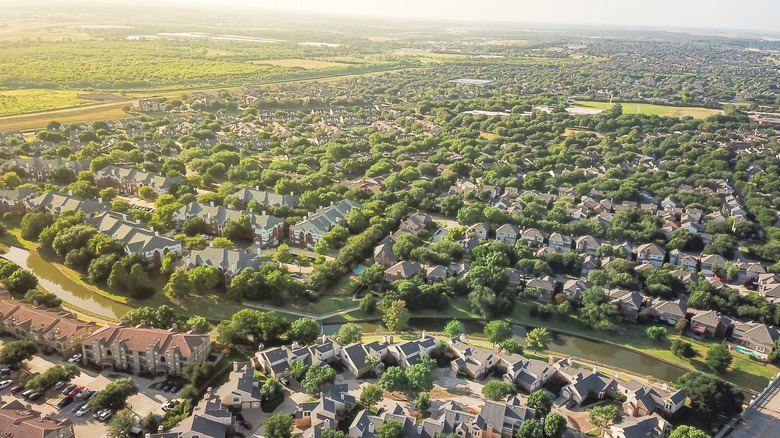The Reason Victor Gruen Regretted Inventing Shopping Malls
In the early 21st century, cheering on the death of malls has become something of a national pastime. Done in by shrinking suburbs, internet shopping, global pandemics, and general disillusionment with consumerism, malls have fallen on hard times. According to CNBC, 25% percent of all malls were predicted to close by 2025, and "abandoned mall photos" have become an entire genre of internet clickbait (via Insider).
Seemingly no one — except, presumably, store owners and their landlords — will miss the mall, and why should they? Accurately or not, they've come to be viewed as synonymous with a certain flavor of empty-headed late–20th-century consumption that more socially conscious types — or at least people looking to appear more socially conscious — have vehemently rejected. After all, who will really miss $5 pretzels, endlessly recirculated air, and Abercrombie & Fitch once they're gone?
As you stand on the sidelines cheering on the death of the mall, though, you might be surprised by who's joining you there: the ghost of Victor Gruen (1903–80), the Austrian-American architect who invented them.
Shopping malls were designed as a cure for suburban sprawl ...
Originally born in Vienna, Victor Gruen emigrated to the United States in 1938 to escape the advancing Nazi army (as both a Jew and a socialist, he had multiple reasons to want to avoid them, according to TED). In the U.S., Gruen at first helped design the now-ubiquitous glass storefront, but as World War II drew to a close, Gruen found himself increasingly dissatisfied with the sprawling suburbs being built to house the families of returning soldiers.
It's a cliché to point it out now, but Gruen was one of the first to do so: There's something inherently isolating about suburbs. Everyone lives in their own little house and drives their own little car to work and then back home. There are no opportunities for spontaneous meet-ups between neighbors. Where, Gruen wondered, was the "third place" — the place for people to engage with each other outside of the home and the workplace? Ancient Greeks had agoras, medieval towns had marketplaces but the modern suburb had nothing.
With all that in mind, Gruen came up with a modern-day approach to a "town square." It would be an indoor courtyard surrounded by stores — but also schools, residences, and medical centers. It would be filled with fountains and art installations. It would be a place for people to shop, but also to gather, socialize, and live (via The Atlantic).
... but mostly just made it worse
Of course, you know how that plan turned out. The first mall, the Gruen-designed Southdale Center, opened in Edina, Minnesota, in 1956. At the time, it had only stores and some art installations but Gruen had high hopes that it would blossom into an integrated community. Parking was deliberately placed far away to encourage people to leave their cars behind and walk.
The concept was seen as cutting-edge at the time, and quickly proliferated around the nation and the world — but it failed to blossom into the sort of close-knit community that Gruen had envisioned. Few to no malls ever incorporated the community centers or homes that Gruen had envisioned — and while communities blossomed around them, they were the exact sort that Gruen hated: sprawling, unplanned dystopias of single-family dwellings, separated from each other by endless seas of pavement. Instead of becoming a town square, the mall had just become another place for people to drive to.
"I am often called the father of the shopping mall," Gruen reflected in 1978 (quoted in Quartz). "I would like to take this opportunity to disclaim paternity once and for all. I refuse to pay alimony to those bastard developments. They destroyed our cities."


